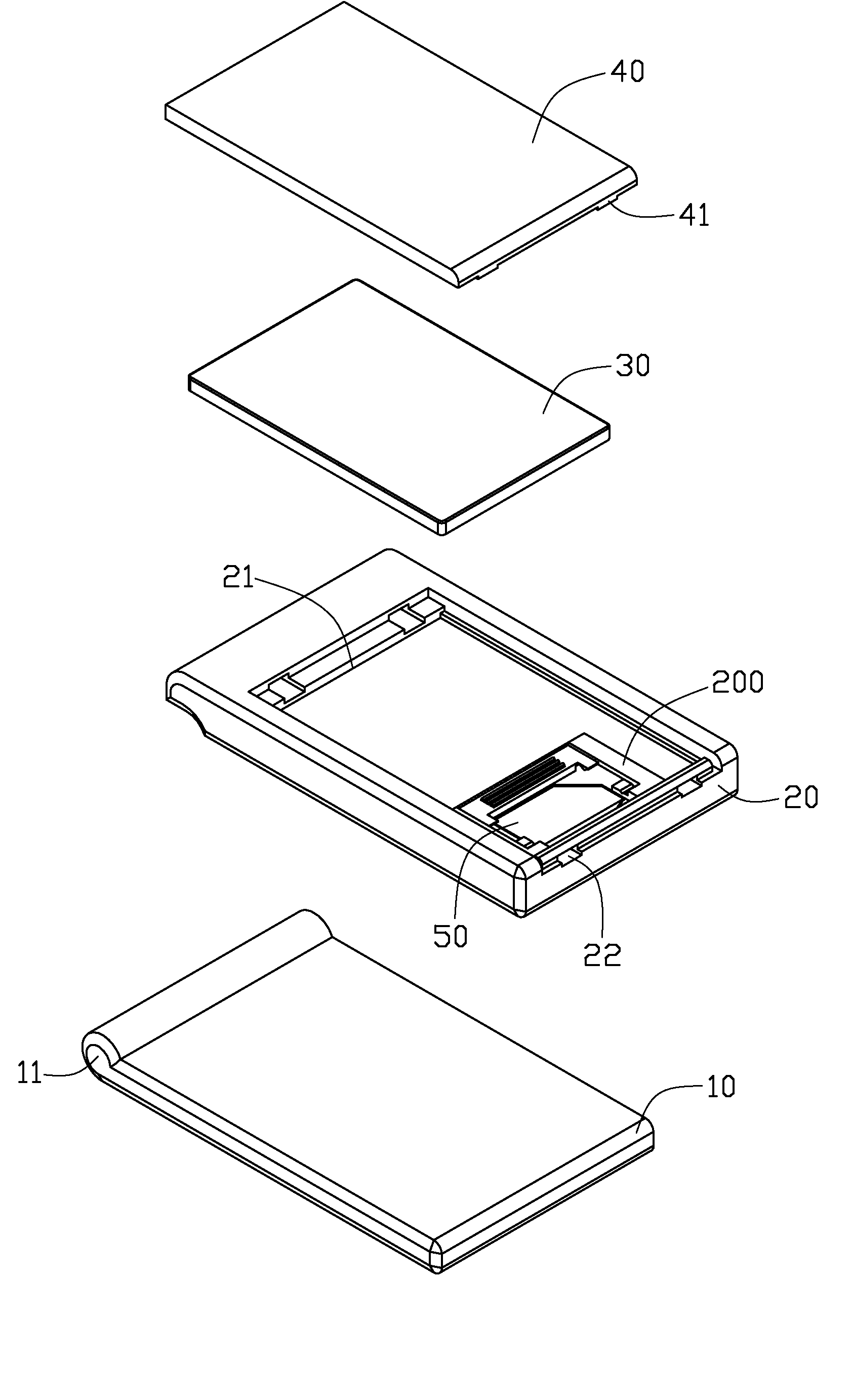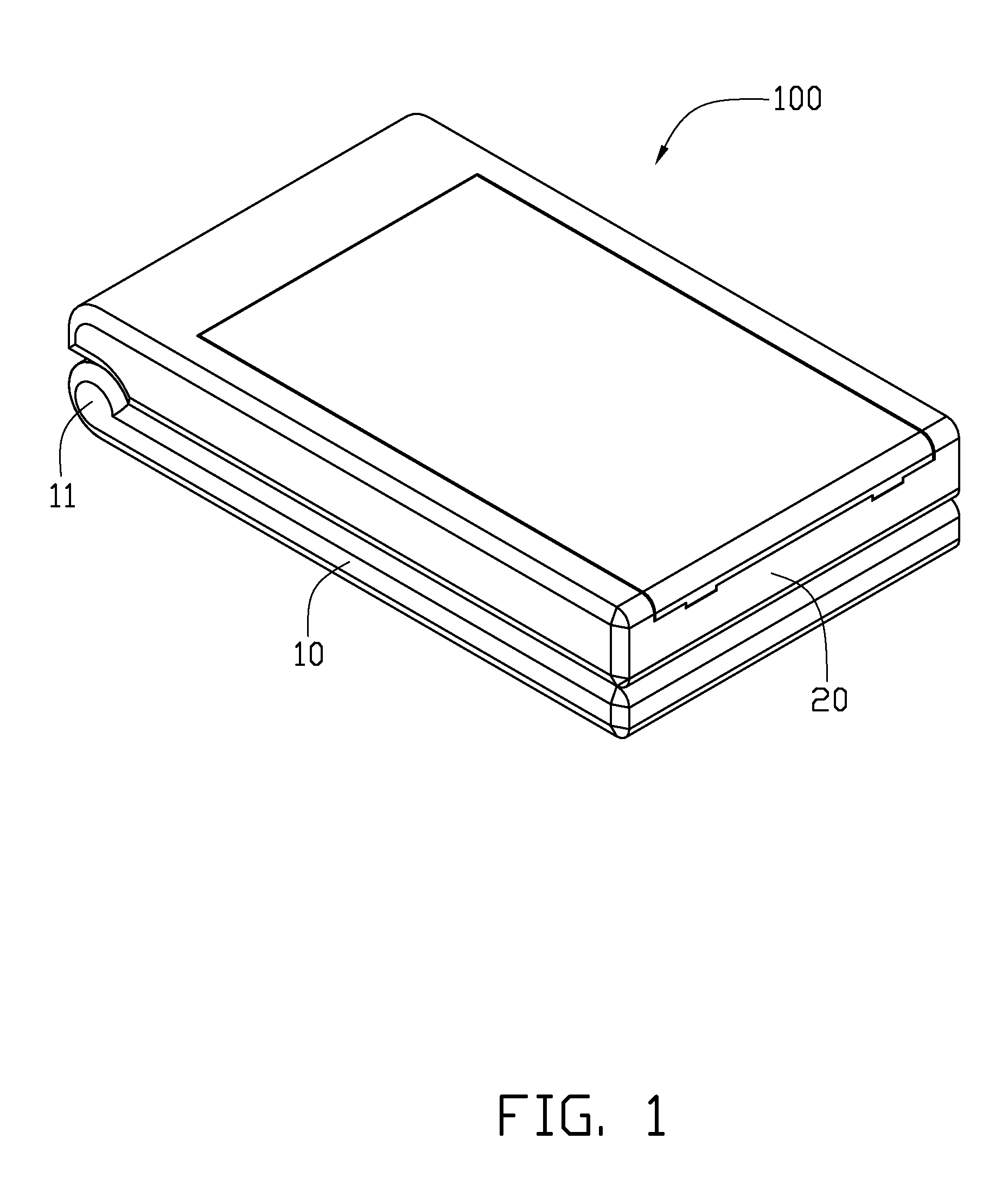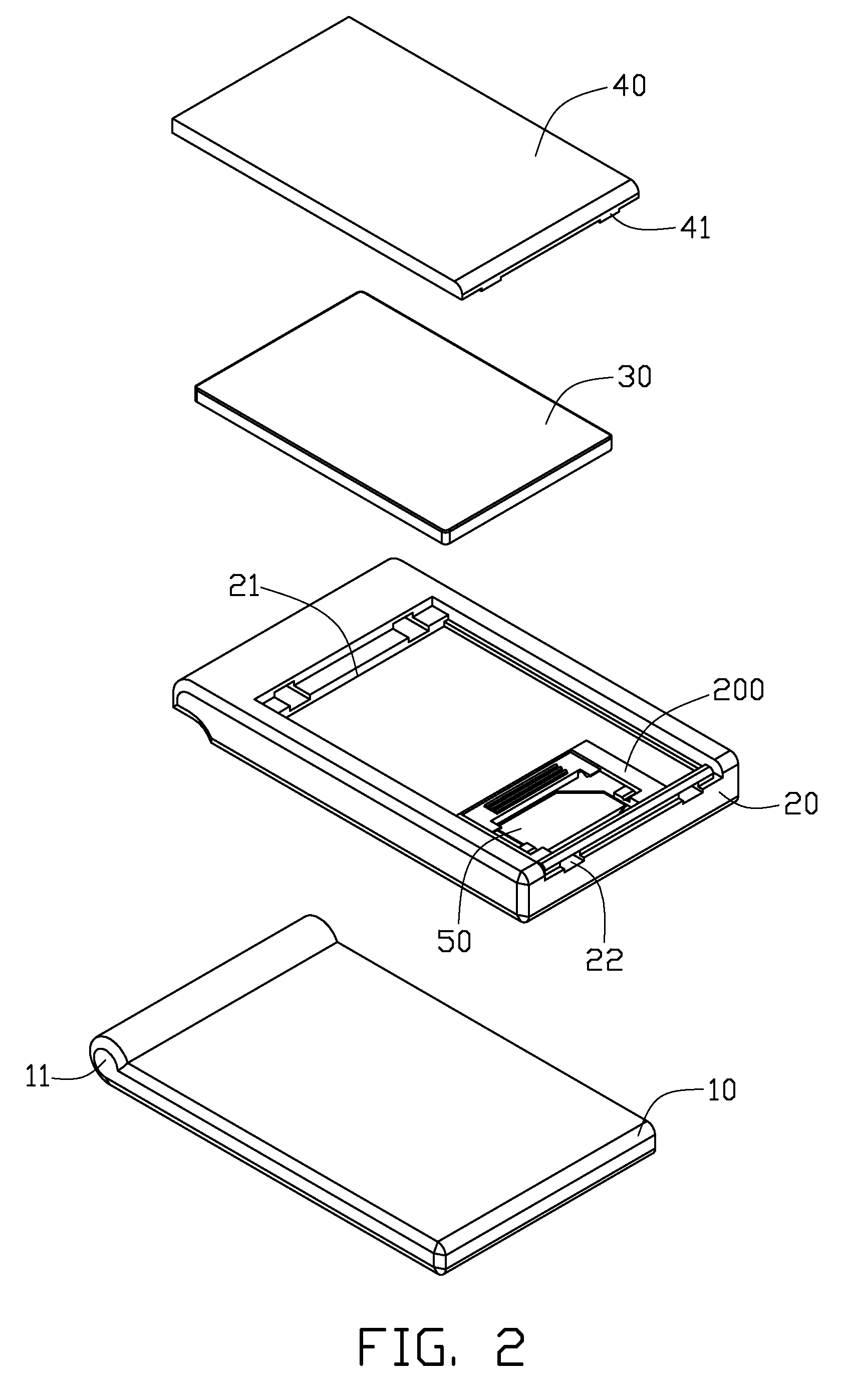Surface contact card retention assembly
- Summary
- Abstract
- Description
- Claims
- Application Information
AI Technical Summary
Problems solved by technology
Method used
Image
Examples
Embodiment Construction
[0016]The present retention assembly may be used for securing a surface contact card in a portable electronic device. Hereinafter, for the purposes of conveniently describing the embodiments of the retention assembly, the retention assembly as used for securing a SIM card in a mobile phone is described and illustrated.
[0017]Referring to FIGS. 1 and 2, an embodiment of a mobile phone 100 includes a first main body 10, a second main body 20, a battery 30, a battery cover 40, a SIM card 50, and an embodiment of a retention assembly 200. The second main body 20 is pivotally connected to the first main body 10 via a hinge 11. The second main body 20 defines a battery groove 21 to receive the battery 30, and a plurality of latching grooves 22 adjacent to the battery groove 21. The battery cover 40 forms a plurality of latching hooks 41 to engage in the latching grooves 22 of the second main body 20, thus shielding the battery 30. The SIM card 50 is secured in the battery groove 21 by the ...
PUM
 Login to View More
Login to View More Abstract
Description
Claims
Application Information
 Login to View More
Login to View More - R&D
- Intellectual Property
- Life Sciences
- Materials
- Tech Scout
- Unparalleled Data Quality
- Higher Quality Content
- 60% Fewer Hallucinations
Browse by: Latest US Patents, China's latest patents, Technical Efficacy Thesaurus, Application Domain, Technology Topic, Popular Technical Reports.
© 2025 PatSnap. All rights reserved.Legal|Privacy policy|Modern Slavery Act Transparency Statement|Sitemap|About US| Contact US: help@patsnap.com



